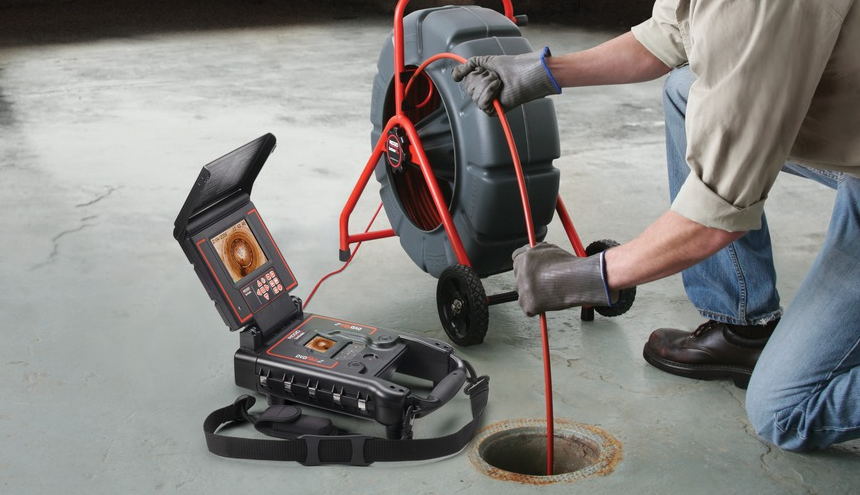- 8am to 5pm, Sat 9am - 2pm, Holiday Timings May Vary
- 323-696-9101 | 844-444-0155
- bluewaterplumbinginc@hotmail.com
In plumbing, camera inspection refers to the use of specialized cameras to visually inspect the interior of pipes, drains, and sewer lines. This technology is commonly used by plumbers and sewer professionals to identify problems, assess the condition of the plumbing system, and determine the most appropriate solutions.
Here’s how camera inspection is typically conducted in plumbing:

Camera System: Plumbers use a small, waterproof camera that is attached to a flexible cable. The camera is designed to navigate through pipes and sewer lines, capturing real-time video footage or images of the interior.
Insertion: The plumber inserts the camera into the plumbing system through an access point, such as a cleanout or an existing opening. The camera is then guided through the pipes to thoroughly inspect the entire length of the system.
Real-Time Monitoring: As the camera moves through the pipes, the plumber monitors the live feed on a screen. This allows for a real-time assessment of the condition of the pipes and the identification of any issues, such as blockages, cracks, root intrusions, or other damage.
Documentation: The inspection process often includes recording video footage or taking images. This documentation is useful for creating a visual record of the plumbing system’s condition and can be shared with the property owner for further discussion.
Camera inspection in plumbing has several benefits:
Precision: It provides a clear and detailed view of the interior of pipes, allowing for accurate diagnosis of problems.
Efficiency: Camera inspection minimizes the need for exploratory digging or invasive measures to locate and identify plumbing issues.
Cost-Effective: By pinpointing the exact location and nature of the problem, plumbers can devise targeted and cost-effective solutions.
Common issues that can be identified through camera inspection in plumbing include:
Blockages: Whether caused by debris, grease buildup, or other materials.
Cracks and Leaks: Identifying areas of pipe damage, including cracks and leaks.
Root Intrusions: Tree roots penetrating into sewer lines.
Corrosion: Detecting signs of corrosion or deterioration in metal pipes.
Misalignments: Identifying areas where pipes may have shifted or become misaligned.